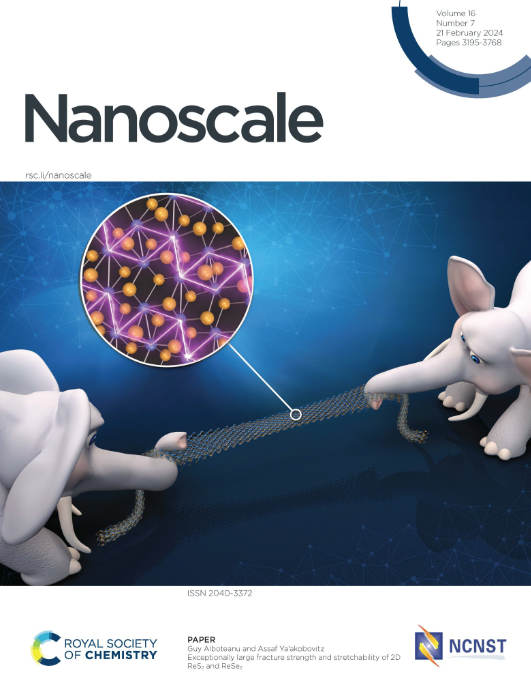Plasma-Induced Nanogap Narrowing and Morphological Transformation in Gold Nanoparticle Assemblies
IF 5.8
3区 材料科学
Q1 CHEMISTRY, MULTIDISCIPLINARY
引用次数: 0
Abstract
The plasmonic properties of gold nanoparticle (AuNP) assemblies are critically influenced by the nanogaps between particles. Here, we demonstrate that plasma treatment effectively narrows these nanogaps and ultimately merges the nanoparticles. This process induces a sequential redshift, weakening, broadening, and eventual blueshift of the plasmon coupling peak in UV–vis spectra, indicating transitions from classical to quantum regimes and finally to contact modes. Surface-enhanced Raman spectroscopy reveals an initial increase in intensity as the nanogaps narrow, followed by a decline as linker molecules are removed. Transmission electron microscopy images further show significant deformation of AuNPs after 5 min of plasma treatment. Based on these combined observations, we propose that oxidative desorption of thiol linkers causes the collapse of self-assembled monolayers, leading to the gradual narrowing of nanogaps and eventual particle fusion. This plasma-induced transformation also enables the creation of novel AuNP shapes, such as nano-snowmen and particles with protruding morphologies, by merging heterodimers or core-satellite structures. Our findings not only deepen the understanding of plasma effects on nanoparticle assemblies but also expand the utility of plasma treatment for controlling nanogap distances and fabricating exotic nanoparticle shapes.等离子体诱导的金纳米粒子组装中的纳米间隙变窄和形态转变
金纳米粒子(AuNP)组装体的等离子特性受到粒子间纳米间隙的重要影响。在这里,我们证明等离子体处理可有效缩小这些纳米间隙,并最终合并纳米粒子。这一过程导致紫外-可见光谱中的等离子体耦合峰依次发生红移、减弱、增宽并最终蓝移,表明了从经典模式到量子模式,最后到接触模式的转变。表面增强拉曼光谱显示,随着纳米间隙的缩小,强度开始增加,随后随着连接分子的移除而下降。透射电子显微镜图像进一步显示,经过 5 分钟等离子处理后,AuNPs 发生了明显变形。根据这些综合观察结果,我们认为硫醇连接体的氧化解吸会导致自组装单层的坍塌,从而导致纳米间隙逐渐变窄并最终导致粒子融合。这种等离子体诱导的转变还能通过合并异质二聚体或核心-卫星结构,产生新颖的 AuNP 形状,如纳米雪人和具有突出形态的颗粒。我们的发现不仅加深了人们对等离子体对纳米粒子组装的影响的理解,而且扩大了等离子体处理在控制纳米间隙距离和制造奇特纳米粒子形状方面的用途。
本文章由计算机程序翻译,如有差异,请以英文原文为准。
求助全文
约1分钟内获得全文
求助全文
来源期刊

Nanoscale
CHEMISTRY, MULTIDISCIPLINARY-NANOSCIENCE & NANOTECHNOLOGY
CiteScore
12.10
自引率
3.00%
发文量
1628
审稿时长
1.6 months
期刊介绍:
Nanoscale is a high-impact international journal, publishing high-quality research across nanoscience and nanotechnology. Nanoscale publishes a full mix of research articles on experimental and theoretical work, including reviews, communications, and full papers.Highly interdisciplinary, this journal appeals to scientists, researchers and professionals interested in nanoscience and nanotechnology, quantum materials and quantum technology, including the areas of physics, chemistry, biology, medicine, materials, energy/environment, information technology, detection science, healthcare and drug discovery, and electronics.
 求助内容:
求助内容: 应助结果提醒方式:
应助结果提醒方式:


